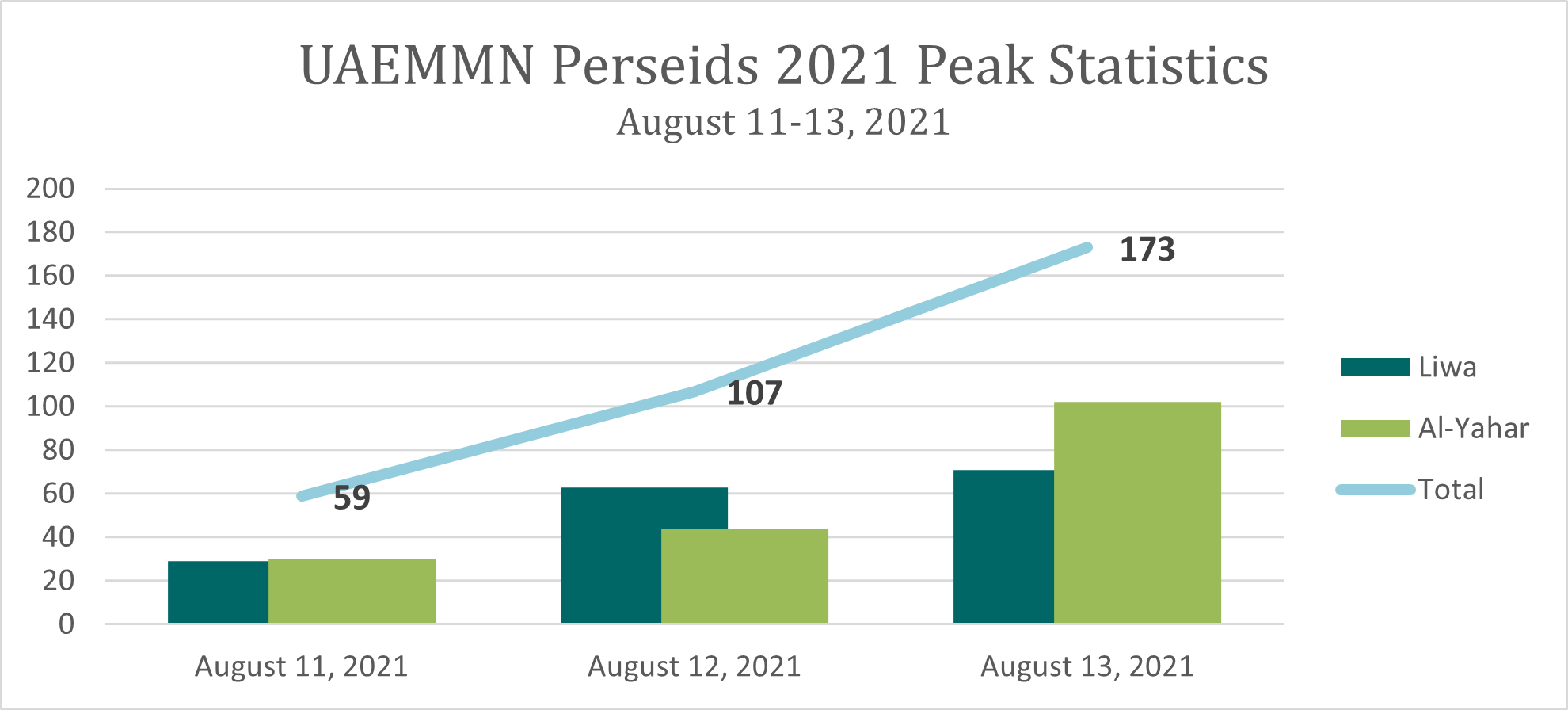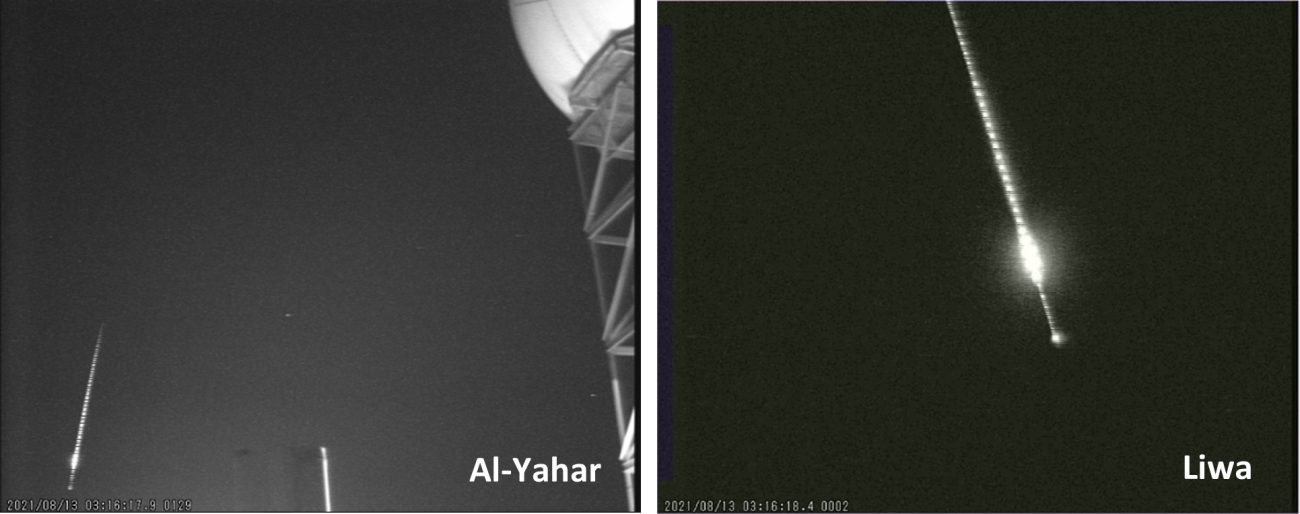Perseid meteor shower radiant point
If you trace all the Perseid meteors backward, they all seem to come from the constellation Perseus, near the famous Double Cluster. Hence, the meteor shower is named in honor of the constellation Perseus the Hero.
However, this is a chance alignment of the meteor shower radiant with the constellation Perseus. The stars in Perseus are light-years distant, while these meteors burn up about 60 miles (100 km) above the Earth’s surface. If any meteor survives its fiery plunge to hit the ground intact, the remaining portion is called a meteorite. Few – if any – meteors in meteor showers become meteorites, however, because of the flimsy nature of comet debris. Most meteorites are the remains of asteroids.
The UAE Meteor Monitoring Network
The UAE Meteor Monitoring Network recorded many meteors despite the cloudy skies during the Perseids shower peak. The network towers located in Al-Yahar and Liwa captured 339 meteors during the peak period (11th - 13th August 2021). Out of the total count, 176 meteors were detected by Al-Yahar, and Liwa detected 163 meteors.
The figure below demonstrates the number of meteors observed by each tower with the total count per day. The numbers are showing an increasing behavior, peaking on 13th August 2021 with a total count of 173 meteors.

An example of a bright meteor captured by Al-Yahar and Liwa towers during the Perseids shower peak on 13th August 2021 at 03:16:17. It was observed by the camera pointing towards the South-West from Al-Yahar tower and the camera pointing towards the South from Liwa tower.



